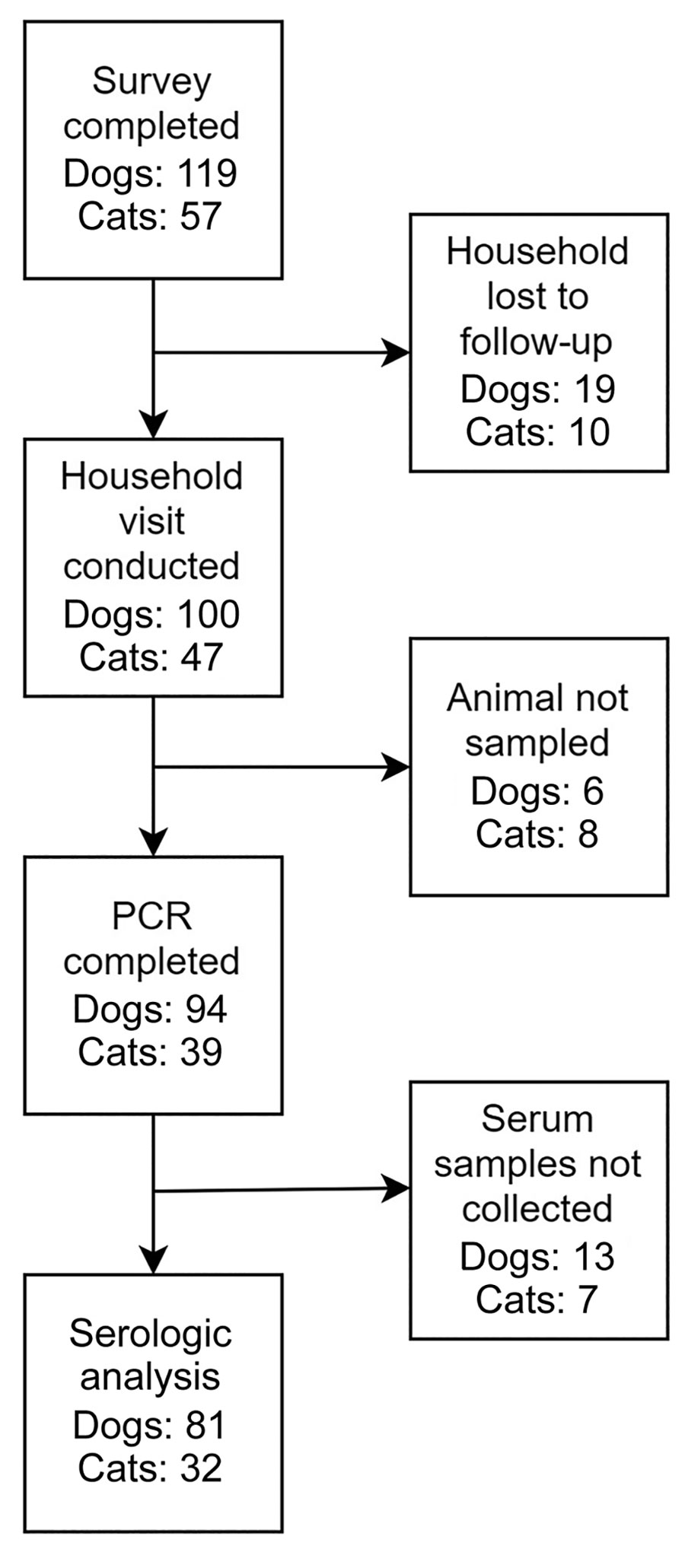Volume 28, Number 12—December 2022
Research
Household Transmission of SARS-CoV-2 from Humans to Pets, Washington and Idaho, USA
Figure 2

Figure 2. Flowchart indicating serologic and PCR sampling for study of household transmission of SARS-CoV-2 from humans to pets, Washington and Idaho, USA. Of 119 dogs and 57 cats corresponding to 105 households that had completed surveys, PCR testing was complete for 94 dogs and 39 cats, and serologic testing was complete for 81 dogs and 32 cats. The remaining pets were not sampled because of safety concerns.
1Current affiliation: Washington State Department of Health, Shoreline, Washington, USA.
Page created: October 06, 2022
Page updated: November 21, 2022
Page reviewed: November 21, 2022
The conclusions, findings, and opinions expressed by authors contributing to this journal do not necessarily reflect the official position of the U.S. Department of Health and Human Services, the Public Health Service, the Centers for Disease Control and Prevention, or the authors' affiliated institutions. Use of trade names is for identification only and does not imply endorsement by any of the groups named above.